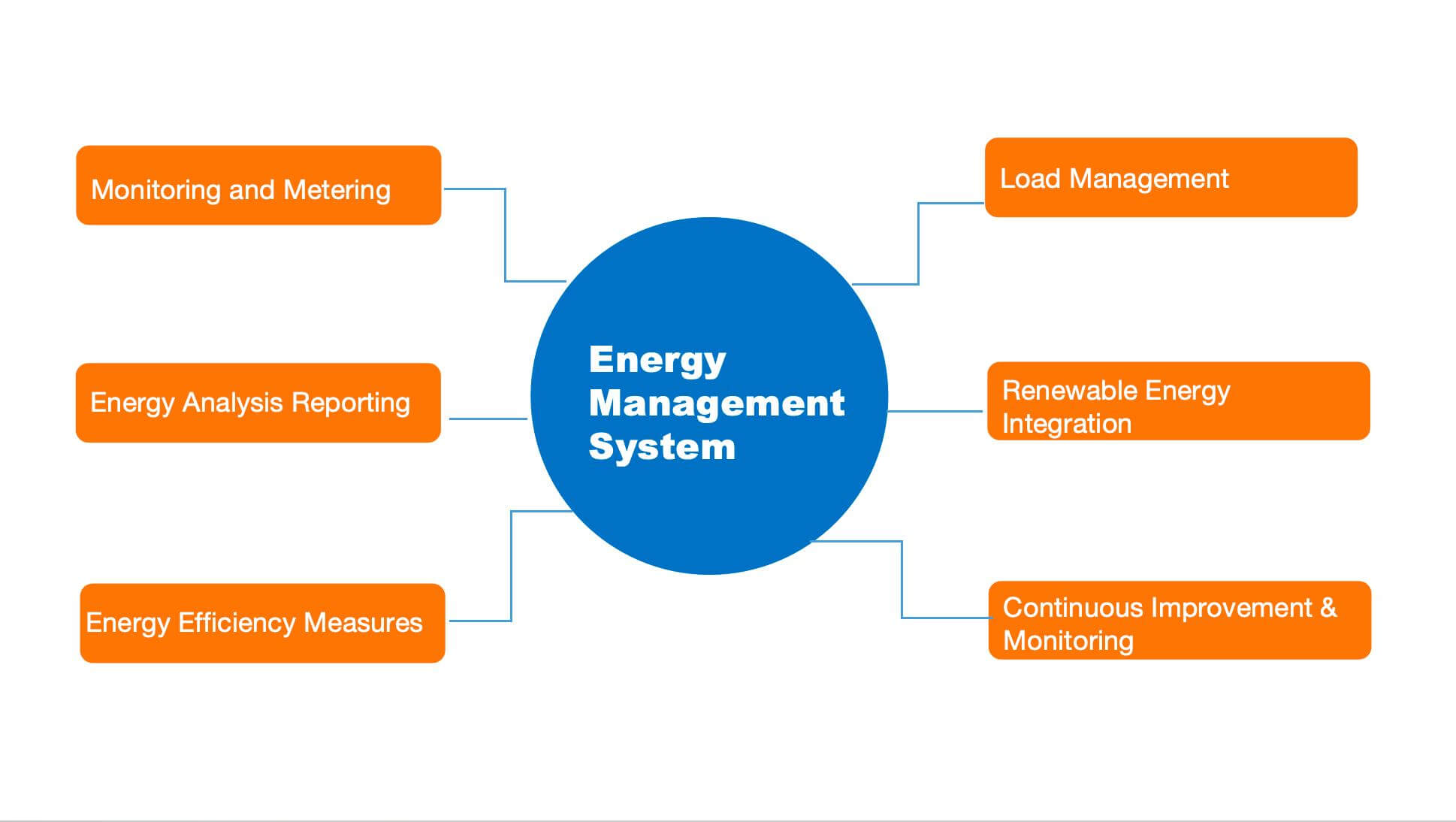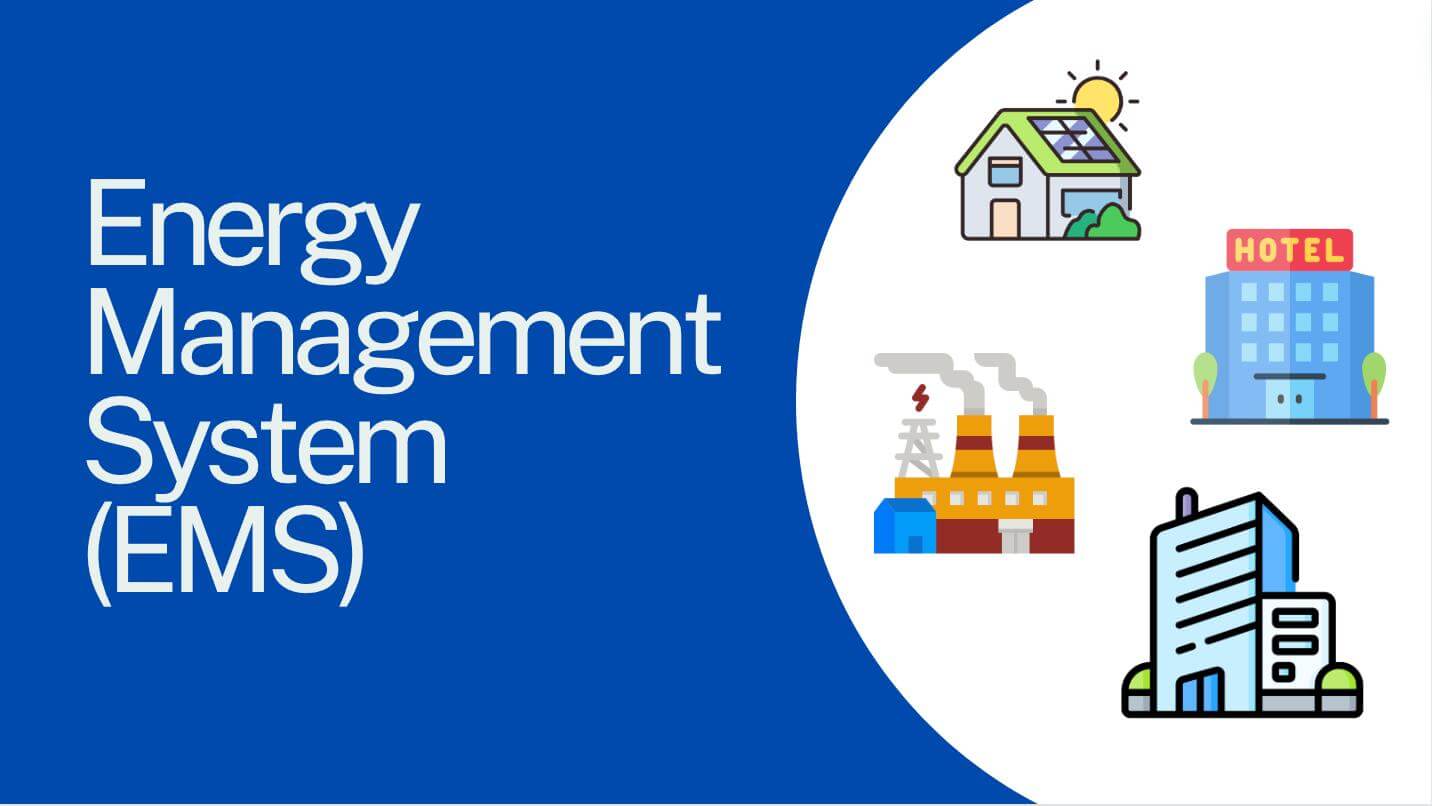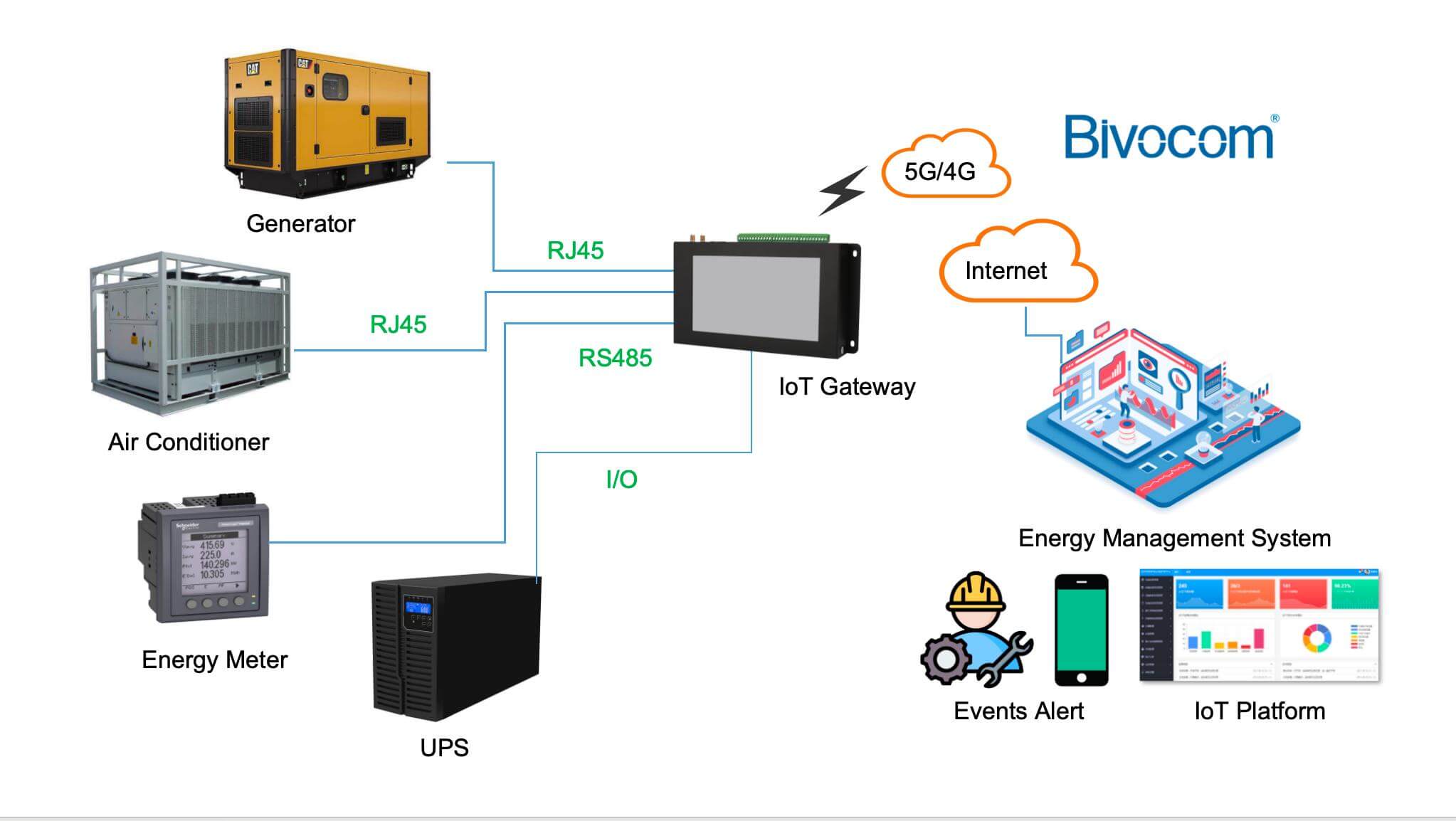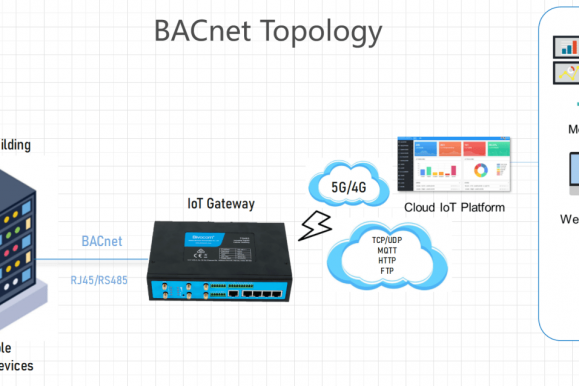Revolutionizing Energy Management with IoT Gateway Integration
In today’s rapidly evolving technological landscape, the integration of Internet of Things (IoT) technology has brought about significant advancements in the field of energy management. By leveraging IoT gateways, organizations can now monitor and optimize crucial components of their energy infrastructure, such as generators, UPS systems, air conditioners, energy analyzers, and meters, in real time. This innovative approach offers unparalleled visibility and control, ultimately leading to enhanced efficiency, cost savings, and sustainability.
This article will explain what an energy management system is, where it is used, and at the end, we will share a case study of energy management implemented in a data center using IoT technology.
What is an Energy Management System?
An energy management system (EMS) is a comprehensive approach to monitoring, controlling, and optimizing energy consumption within a facility or organization. It involves the integration of technology, processes, and strategies to effectively manage energy resources, improve efficiency, reduce costs, and minimize environmental impact.
Key components of an energy management system typically include:

Monitoring and Metering: EMS involves the implementation of energy monitoring systems and meters to track energy consumption patterns, identify areas of high usage, and detect inefficiencies in real-time. By collecting accurate and reliable data, organizations can gain insights into their energy consumption behavior and make informed decisions for optimization.
Energy Analysis and Reporting: Energy management systems utilize analytics tools to analyze data collected from monitoring systems. By generating reports and performance indicators, organizations can assess energy usage trends, benchmark performance against targets, and identify opportunities for improvement.
Energy Efficiency Measures: EMS includes the implementation of energy efficiency measures such as equipment upgrades, maintenance programs, operational changes, and behavioral initiatives to reduce energy wastage and enhance overall efficiency. These measures can result in cost savings, reduced carbon emissions, and sustainability benefits.
Demand Response and Load Management: EMS enables organizations to participate in demand response programs and proactively manage peak energy demand. By adjusting energy usage in response to grid conditions or price signals, organizations can optimize their energy consumption, reduce electricity costs, and contribute to grid stability.
Renewable Energy Integration: Many energy management systems incorporate renewable energy sources such as solar panels, wind turbines, or geothermal systems. By integrating renewable energy into their energy mix, organizations can reduce dependence on fossil fuels, lower carbon emissions, and enhance their sustainability profile.
Continuous Improvement and Monitoring: EMS facilitates a continuous improvement process through ongoing monitoring, performance tracking, and evaluation of energy management initiatives. By setting goals, measuring progress, and adjusting strategies as needed, organizations can achieve long-term energy efficiency and sustainability objectives.
Overall, an energy management system provides a structured framework for organizations to proactively manage their energy usage, optimize efficiency, and achieve sustainable energy goals. By leveraging technology, analytics, and best practices, EMS enables organizations to make data-driven decisions, reduce costs, and contribute to a greener and more sustainable future.
Where Are Energy Management System Used?
Energy management systems are used in various settings where efficient energy use and cost savings are priorities. Here are some common applications of energy management systems:

Icon source: https://www.flaticon.com/
Commercial Buildings: Energy management systems are commonly used in commercial buildings such as offices, retail spaces, hotels, and hospitals to monitor and optimize energy consumption. These systems help building owners and managers track energy usage, identify inefficiencies, and implement energy-saving measures to reduce operational costs.
Industrial Facilities: Manufacturing plants, refineries, and other industrial facilities use energy management systems to monitor and control energy-intensive processes. By optimizing equipment performance, managing peak demand, and implementing energy efficiency measures, industrial facilities can reduce energy costs and improve overall sustainability.
Residential Buildings: Smart home energy management systems are becoming increasingly popular in residential buildings. These systems allow homeowners to monitor and control energy usage through smart devices, enabling them to save energy, reduce utility bills, and increase home comfort.
Data Centers: Energy management systems are essential in data centers to monitor and optimize the energy usage of servers, cooling systems, and other equipment. By implementing efficient cooling strategies, virtualization techniques, and energy-efficient hardware, data centers can minimize energy consumption and reduce operating costs.
Transportation: Energy management systems are used in vehicles and transportation fleets to optimize fuel efficiency and reduce emissions. These systems may include telematics solutions, route optimization tools, and driver behavior monitoring to maximize energy efficiency and minimize operational costs.
Public Sector: Government buildings, schools, and other public sector facilities use energy management systems to track energy consumption, identify areas for improvement, and implement energy-saving measures. These systems help public sector organizations reduce energy costs, meet sustainability goals, and set an example for the community.
Utilities: Energy management systems are also utilized by utility companies to manage energy distribution, balance supply and demand, and optimize grid operations. These systems help utilities improve grid reliability, integrate renewable energy sources, and implement demand response programs to enhance overall system efficiency.
In summary, energy management systems are used in a wide range of settings to monitor, control, and optimize energy consumption. By providing valuable insights, data-driven decision-making, and automation capabilities, these systems help organizations and individuals achieve energy savings, reduce costs, and contribute to a more sustainable future.
Energy Management System Used in Data Center
A data center’s energy management system typically consists of various components and practices aimed at optimizing energy efficiency, reducing energy consumption, and ensuring reliable operation. Some key elements of a data center’s energy management system include:

Generators play a vital role in ensuring uninterrupted power supply during outages or peak demand periods. With IoT-enabled monitoring, organizations can remotely track parameters like fuel levels, runtime statistics, and maintenance schedules. By receiving automatic alerts and predictive maintenance notifications, potential issues can be identified and addressed proactively, minimizing downtime and maximizing operational efficiency.
UPS systems provide critical backup power in the event of mains power failure. Through IoT integration, users can monitor battery health, load capacities, and operational status in real-time. By analyzing data insights generated by the IoT gateway, organizations can optimize UPS performance, extend battery life, and ensure seamless transition during power transitions.
Air conditioners are significant energy consumers in commercial and industrial settings. By utilizing IoT sensors and smart thermostats, organizations can monitor and control temperature settings, energy usage patterns, and HVAC efficiency. Through intelligent adjustments and scheduling based on occupancy and external factors, energy consumption can be optimized without compromising comfort levels.
Energy analyzers and meters are essential tools for monitoring and analyzing energy consumption patterns in real-time. With IoT connectivity, organizations can centralize data collection, perform advanced analytics, and generate actionable insights for better decision-making. By tracking energy usage trends, identifying inefficiencies, and setting baseline targets, businesses can implement targeted strategies to reduce costs and minimize environmental impact.
The integration of IoT gateway technology enables seamless communication and data exchange among diverse energy management components, creating a unified ecosystem for comprehensive monitoring and control. By harnessing the power of real-time data, organizations can achieve greater operational efficiency, optimize resource allocation, and drive continuous improvement in their energy management strategies.
Conclusion
In conclusion, the adoption of IoT gateway technology for monitoring generators, UPS systems, air conditioners, energy analyzers, and meters represents a transformative shift in energy management practices. By unlocking unprecedented insights and capabilities, organizations can proactively manage their energy infrastructure, improve system reliability, and achieve sustainable energy goals in an increasingly complex and dynamic energy landscape.




Comment